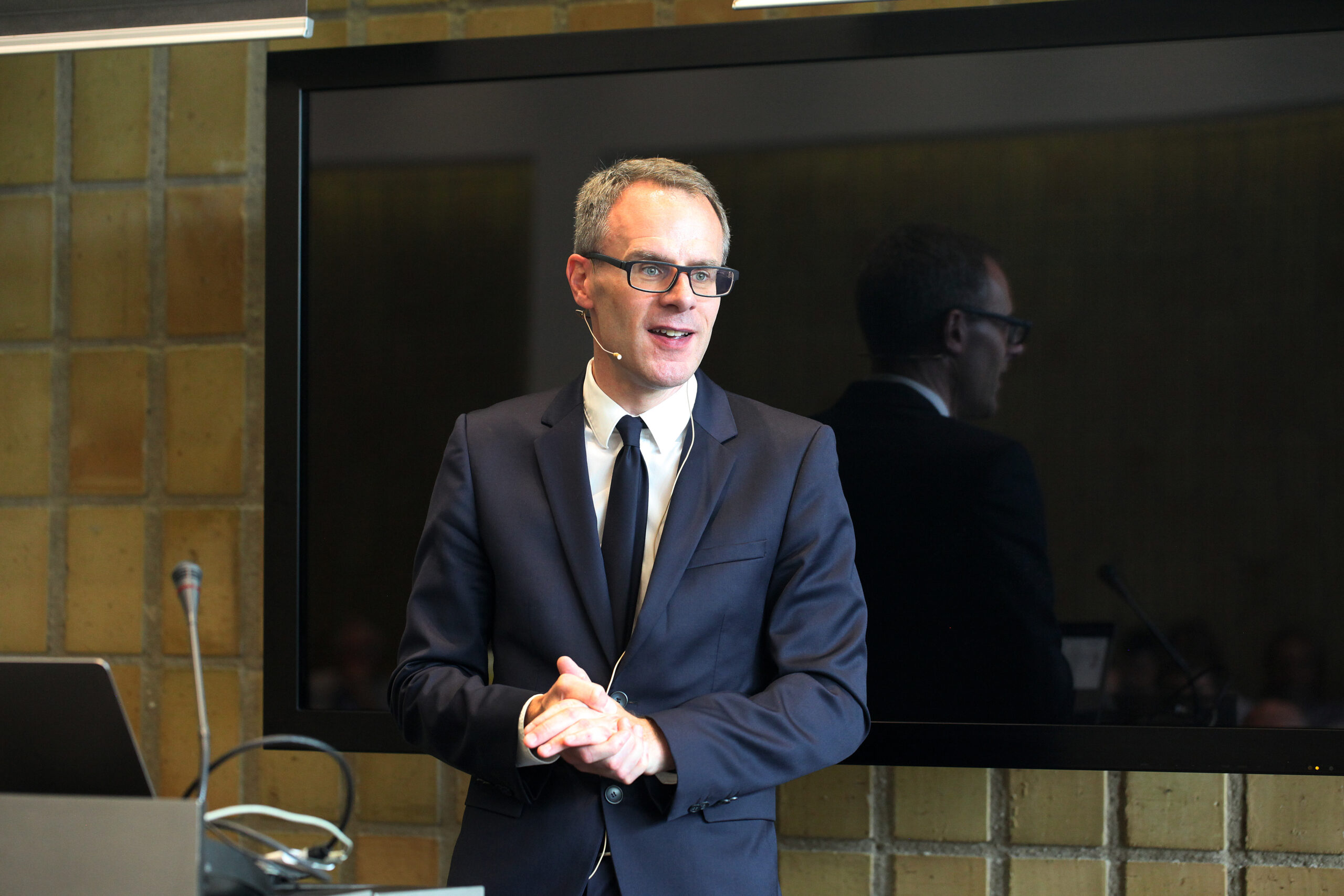VISION marks Center of Excellence with inaugural lecture by Professor Stig Helveg
At the end of last week, one of the DNRF’s newest Centers of Excellence, the Center for Visualizing Catalytic Processes (VISION), could finally officially celebrate the center’s opening, which had been postponed from last year. The opening was observed with Professor Stig Helveg’s inaugural lecture “Images, atoms and sustainability: Towards a new paradigm” at DTU. VISION opened in March 2020, when the whole country was in lockdown. Nevertheless, it has been working full force ever since, with a focus on catalytic processes, which are needed to tackle the great environmental challenges of our time.

The Lyngby campus at DTU provided the setting on Thursday, September 16, 2021, for Professor Stig Helveg’s inaugural lecture “Images, atoms and sustainability: Towards a new paradigm.” The event was held in honor of Helveg’s appointment as a professor at DTU as well as to mark the opening of the Center for Visualizing Catalytic Processes (VISION), where Professor Helveg is head of center. The center was opened in March 2020, when Denmark was in lockdown because of Covid-19. The center aims to fight the central environmental challenges by improving our understanding of catalytic processes.
The combined event was opened by head of department at DTU Physics, Jane Hvolbæk Nielsen, who welcomed the guests, and then introduced Professor Helveg by talking about his professional background, which, among other things, includes almost 100 scientific publications, international collaborations, and research prizes. Afterward, the rector of DTU, Claus Nielsen, took the stage and noted:
“Due to Covid-19 we have been delayed several times in celebrating the Center of Excellence, but it is never too late. Congratulations to you all! A special thanks to the Danish National Research Foundation – without your donation we wouldn’t be here today.”
Later, the DNRF’s board chair, Professor Jens Kehlet Nørskov, told the audience:
“I’m here to remind you that we are not just celebrating Stig and his lecture, but also the opening of VISION. Congratulations to the whole team – because it is a team effort. We look forward to following the work of this center, and now the rest is up to you. Good luck to you!”
After some further introductions, Professor Helveg started out by thanking the three speakers and the Danish National Research Foundation; he also thanked the members of the audience for attending the opening. He then moved on to the topic of the day:
“Our modern society relies on fuels and chemicals, which to a large degree are based on fossil resources. So one contribution we can make to changing this situation is to replace industrial processes with resources that rely on sustainable substances and energy. The magic trick is to take these sustainable resources and turn them into the commodities we need – and this magic trick is catalysis. So our task is to find and develop new catalytic processes.”
Professor Helveg then moved on to what catalytic:
“In a nutshell it is a surface phenomenon; it is the ability to convert molecules at lower energy cost.”
Professor Helveg also talked about a new electron microscope that will enable the center’s staff to visualize individual nanoparticles in catalysts used to accelerate chemical processes without being consumed by them. The unique electron microscope will be created by combining a range of new technologies in the near future at DTU. Once the individual atoms in nanoparticles can be identified, the next step will be to determine their catalytic properties. If this succeeds, there will be a paradigm shift within catalytic research.
The lecture was followed by a Q&A from the guests followed by a reception.
Read more about Professor Helveg and his inaugural lecture at DTU here
